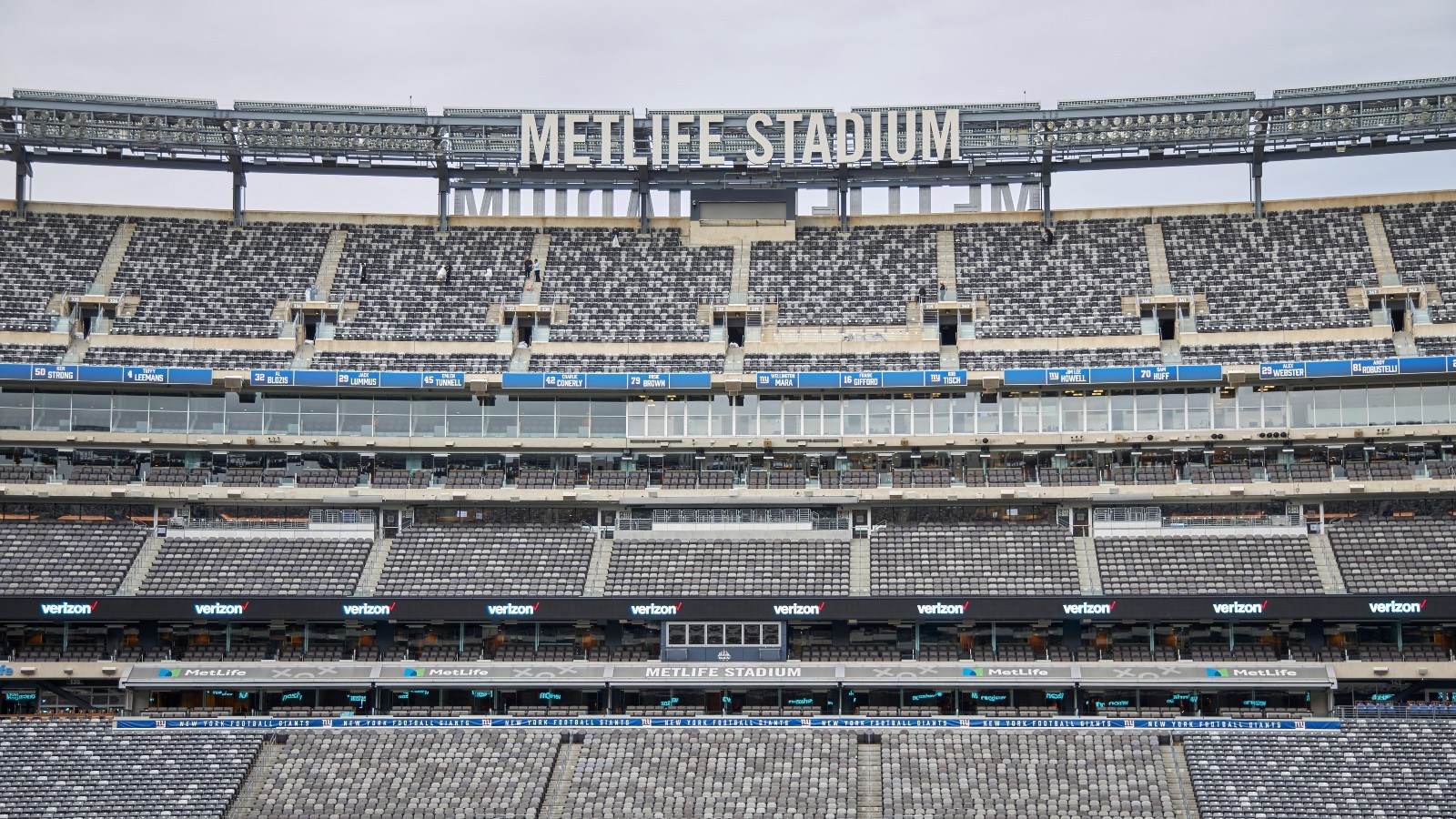Underwater Stadiums: Fenway Park Will Be Gone By 2100

Promo Code: BOOKIES
Hurricane season is upon us, and each year it get more dangerous due to rising sea levels. You can pick any reason you want when trying to explain why sea levels are rising. We know this for certain: They’re going to continue to rise for the foreseeable future.
Sea level along the U.S. coastline is projected to rise, on average, 10-12 inches in the next 30 years, which is as much as the rise measured over the last 100 years. The East Coast along the Atlantic Ocean, and its major tributaries, is going to get hit worst.
According to the National Oceanic and Atmospheric Administration, “major flooding” events will also occur five times as often in 2050 as it does today.
There are a lot of beautiful stadiums along major waterways that could be affected by 2050. By 2100, projections have some of these sports palaces submerged under water.
Bookies.com utilized the interactive map from ClimateCentral.com and cross-referenced it with the locations of every arena and stadium for the major pro leagues and every college with an NCAA Division I football or basketball arena.
Here are the sports stadiums and arenas most likely to be unusable by the turn of the century.
Sports Venues Most Likely to Be Under Water by 2100
| Stadium | Odds | Implied Probability |
| Fenway Park | -500 | 83.3% |
| Flushing Meadows | -450 | 81.8% |
| MetLife Stadium | -350 | 77.8% |
| TD Garden | -325 | 76.5% |
| LoanDepot Park | -200 | 66.7% |
| Hagood Memorial Stadium | -175 | 63.6% |
| Harvard Stadium | -175 | 63.6% |
| Nationals Park | -125 | 55.6% |
| TIAA Bank Field | -125 | 55.6% |
| Kaseya Center | -110 | 52.4% |
| Citi Field | +150 | 40.0% |
| Lincoln Financial Field/Wells Fargo Center | +250 | 28.6% |
| Hard Rock Stadium | +275 | 26.7% |
| Amalie Arena | +300 | 25.0% |
| Audi Field | +300 | 25.0% |
| Tropicana Field | +350 | 22.2% |
| Armstrong Field | +400 | 20.0% |
| Yale Bowl | +400 | 20.0% |
Odds created by Bookies.com oddsmaker Adam Thompson and are for entertainment purposes only. They do not reflect any market that may be available on betting sites and betting apps.
Fenway Park, Boston
Fenway is one of the more storied venues of American Sports, home of the Red Sox since 1912. By the turn of the century, however, it will be sitting in water due to rising levels of the Charles River and the lower sea level placement of Fenway.
By 2100, the entire area, including Clemente Field and a huge swatch of the South End, are in major danger of disappearing thanks to rising levels. In fact, much of Boston is on track to suffer the same fate.
Flushing Meadows, New York City
The rising levels of Flushing Creek will come close to the doors of Citi Field, home of the New York Mets. But it will all but eliminate Armstrong Stadium, the No. 2 arena for the U.S. Open tennis tournament, and come nearly to the front door of Billie Jean King National Tennis Center. One of the sport’s majors will need a Plan B before long.
MetLife Stadium, East Rutherford
The East Rutherford area is going to be in big trouble when waters rise. That includes the home field of both the New York Giants and Jets. Rising levels of the Hackensack is projected to overtake a massive swath of area which also includes the Meadowlands race track.

Credit: USA Today
TD Garden, Boston
Just as Fenway won’t be there by the turn of the century, the home of the Celtics and Bruins likely won’t be accessible, either. Much of Boston will need to be relocated, including Massachusetts Institute of Technology (MIT).
loanDepot Park, Miami
The home of the Miami Marlins was built not too long ago, in 2012. By the end of the century, however, it will be a relic of a bygone era – and surrounded by water. The north fork of the Miami River is expected to expand and spill into East Little Havana, engulfing the parking garages adjacent to the stadium.
Nationals Park, Washington, D.C.
Perhaps a surprise entrant on the list, D.C. has mighty rivers running around it, with eventual access to the oceans. By the end of the century, water levels from the from the Anacostia River are expected to be just 200 yards from home plate, engulfing the Navy Yard and the Riverwalk Trail.
TIAA Bank Field, Jacksonville
The Jaguars stadium is in a low spot, and close enough to the St. Johns River to be worried. By this date, Commodore Point and Metropolitan Park may be under water, and water is expected over the current parking lots of the Jaguars’ home field, if not even closer.
Kaseya Center, Miami
The Miami Heat's home court isn’t in the best spot for rising tides. The northern end of the arena may be soaked by the turn of the century. The bay walk will be gone as will be Miamarina at Bayside. North and south of the arena, and along the Miami River, are expected to get worse.
Hagood Memorial Stadium, Charleston, S.C.
Charleston, South Carolina is going to look a lot different in 2100. Much of the area sits below the flood level and with rising seas will come the disappearance of land. All of the land south of the stadium adjacent to the Ashley River will be waterlogged, up to the parking lot of stadium of The Citadel football program.
Harvard Stadium, Cambridge, Mass.
Say goodbye to much of the Harvard campus, which sits well under the expected water levels of this date. Everything west of North Harvard Street to the Charles River is in dire trouble, including all the sports facilities of this Ivy League institution.

Credit: USA Today
Other Fields That Could Be In Trouble
Citi Field, New York City
The New York Mets’ stadium should still be usable by this time, but rising levels of Flushing Creek are worrisome. Parts of adjacent could become ponds, and the Casey Stengel Bus Depot nearby could be in trouble.
Lincoln Financial Field/Wells Fargo Center, Philadelphia
The Eagles opened play at The Linc in 2003, while the 76ers and Flyers first played at Wells Fargo Center in 1996. The next-door venues should still be standing, if needed, by this date, but rising water is expected to wipe out the Navy Yard and parks on the other side of Interstate 95. The next spot north to get hit would be Lot D, adjacent to stadiums.
Hard Rock Stadium, Miami
The Miami Dolphins’ stadium has hosted six Super Bowls, four college football national championships and even WrestleMania. Experts are hopeful the stadium can continue to do so for the foreseeable future, but the expansion of the waterways near the stadium may flood nearby neighborhoods. It wouldn’t take a huge jump in projections for those waters to reach the Hard Rock.

Credit: USA Today
Amalie Arena, Tampa
The home of the Tampa Bay Lightning could be OK by this date, but the land to the south may be quite waterlogged with the rising levels of the Garrison Channel. That includes Old Water St. and the park across the street from the arena, and the HSBC Station.
Audi Field, Philadelphia
The Union of the MLS has a great stadium, but its placement directly on the shore of the Delaware River may prove to be problematic eventually. While the rising level isn’t overwhelming, it is expected to rise partially where the stadium currently sits.
Tropicana Field, St. Petersburg
At this rate, the Tampa Bay Rays probably won’t be in town, with the team consistently a part of MLB relocation conversations. By 2100, the aging Tropicana will be a little too close for comfort to the rising waters of the bay, less than a mile from projected shore.
Armstrong Field, Hampton, Va.
Hampton’s football field is a little too close for comfort to the Hampton River. While the field should be OK, the adjacent practice field isn’t, and land to the north, west and south are in tougher spots.
Yale Bowl, New Haven, Conn.
The home stadium of the Yale Bulldogs is safe for now, as are the rest of the athletic facilities nearby. But across Yale Avenue is another story. The Music Bowl and other locales next to the West River will have issues.
About the Author

Long established as one of the nation's premier handicappers, Adam Thompson joined Bookies.com in 2019 after a successful run as senior handicapper for SportsLine & CBSSports.com. He specializes in the NFL and MLB, where he's hit on well over 60% of his picks the past five years. Adam's NBA and horse racing picks have also produced consistent, major winners over the years.